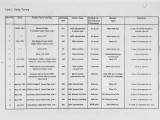| OCR Text |
Show Introduction In recent years, many utility companies have installed 10w-NOx burners in preparation for stricter NOx emissions limits. The results are almost always similar: NOx is reduced by 30-60%, but unburned combustibles are increased. Minimizing unburned combustibles can be achieved through careful burner adjustment. After a testing and optimization phase, the acceptable burner operation is achieved, however for a limited time only. Before long, the combustion system detunes and NOx and unburned combustibles increase again. In order to continuously maintain individual burners at the optimum setting, the boiler operators need an on-line flame quality monitor that would indicate when individual burners are out of tune. If one burner is out of tune, this one bad burner should be rapidly identified and adjusted (using available means of burner adjustment, such as burner register settings, register shrouds, or spin vanes), then NOx, carbon and excess air could be minimized. Identifying the out of tune burners and correcting air or coal flow mal distribution will improve the boiler performance, and also will lead to lower prices on future 10w-NOx burner retrofits. Concept Description In the course of our combustion studies (Ref. 1,2), we came to a better understanding of the mechanism which relates the temporal flame frequency spectra to combustion process in individual burner flames. This has led us to develop new principles of signal processing and to formulate a new approach to combustion diagnostics and optimization based on analysis of the temporal frequency spectra. Correlation of flame fluctuation (or "flicker") with flame quality and emissions can be understood as follows. In individual burner flames, the combustion process is dominated by the rate of mixing of fuel and air, while the chemical kinetics are much faster. Each burner flame consists of a multitude of combustion recirculation cycles (eddies) of various sizes inside and around the flame (Figure 1). These eddies contribute to generating the flame flicker at various frequencies as a result of turbulent mixing at the edges of the fuel and air jets. Smaller eddies occur more frequently and generate higher frequencies, and vice versa. The movement of eddies in turbulent flows affects the mixing rate of air and fuel in turbulent diffusion flames. Every time a turbulent eddy occurs, it mixes fuel (for example, coal or pyrolysis products) with air. The amount offuel and air mixed is controlled by the size of the eddy. Since combustion kinetics are fast compared to these turbulent mixing times, the fuel and air are combusted essentially instantly. Because a large eddy may entrain more fuel than a smaller eddy, a larger eddy should give a larger emission intensity. Each flame characteristic, for example fuel to air ratio, swirl, mixing rate or combustion efficiency, is associated with a dominant group of eddies which, in turn, generate a dominant radiation segment in the temporal frequency spectrum. Relative intensity of this dominant segment will contribute to the shape of the frequency spectrum and will characterize this particular parameter. The pattern of distribution of fluctuational energy which is a function of flame turbulence and fuel-air mixing rate can be characterized, for example, by measuring the average statistical parameters in different frequency bands and their combinations. 2 |

















